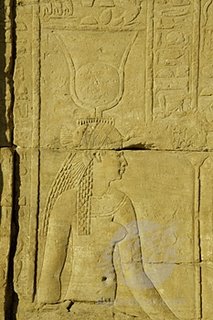
All around us, the Earth sings of Spring. The birth waters have broken open and the rainy season is upon us. Early flowers are blooming, and the animals are bringing forth their young. The Sun has reached the day of balance, with equal hours of light and dark. We celebrate resurrection and rebirth in all its manifestations.
In many traditions, the stories of this time revolve around eggs and their hatching. It is said that Hathor, in the form of the Nile goose, laid a golden egg that was the sun. In Hawai'i it is said the the Big Island hatched from the egg of a giant water bird. The Chimu of Peru clain they are descended from the original egg, the moon. In Hindu mythology, Prappati, the creator, hatched from the great golden egg of eternity. It is also said that Brahma burst forth from a golden egg.
The egg is a symbol of birth, fertility and eternity. It has long been a symbol of Life. The egg holds the complete potential of the creative energy of life. The giving, receiving and decorating of eggs is a symbol in many modern religious traditions: in Christianity, it is the Easter Egg; in Judaism, eggs are a symbol of Esther and Purim; eggs have also long been a symbol of spring in pagan traditions.
In natural situtations, hens lay eggs only from the spring equinox to the autumn equinox; egg-laying is controlled by the amount of light stimulating the retina of the eye. (The amount of light also controls the blooming of most flowers.) At the exact moment of the Vernal Equinox, an egg will stand and balance on its end, an icon of equlibrium.
It is believed that Ostara, the festival of the Vernal Equinox, was first celebrated about 12,000 years ago. In Teuton and Anglo-Saxon tradtions, the goddess of the dawn was named Eostre. She was also called the Queen of Heaven, titles attributed to Andraste, Astarte, Ishtar, Queen Esther and Isis, all of whose names appear to have similar origins.
With the balance of day and night at Ostara, we leave the winter behind. We come out of our hibernation, our months of reflection and inner work, and begin to reach for balance in our lives: the balance of reflection and action, of thought and will. In our gardens and in our lives, we till and turn the soil and plant the seeds of our desires. As the days lengthen, our seeds will sprout and grow and lead us to the harvest at summer's peak.
Where are you reaching for balance in your life?
How are you moving toward greater light?
What seeds are you planting at this time?
c. 2007 Bansagart





